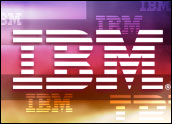
IBM on Monday launched MessageSight, an appliance designed to handle machine-to-machine communications of the future. Such communications will develop exponentially to create what’s known as the “Internet of Things.”
In announcing MessageSight, IBM cited a 2010 report from IMS Research that predicted there will be more than 22 billion Web-connected devices by 2020, which will generate more than 2.5 quintillion bytes of new data daily.
An IBM spokesperson was not immediately available to comment for this story.
More Info on MessageSight
MessageSight is an appliance designed to help manage data and communicate with the billions of mobile devices and sensors found in automobiles, traffic management systems, smart buildings and, eventually, household appliances.
It uses the Message Queuing Telemetry Transport (MQTT) protocol, which was coinvented by IBM and Cirrus Link Solutions engineers.
MessageSight will be able to support 1 million concurrent sensors or smart devices, and will be able to scale up to handle 13 million messages a second. This will enable large volumes of events to be processed in near real time.
For example, when a problem develops in an automobile, that information could be sent immediately to a dealer who could then notify the vehicle’s owner, IBM said. Most late-model vehicles have such sensors connected to lights on their dashboards which come on when there’s a problem, however, so the owner will know at once when a problem occurs.
The MessageSight appliance was developed as part of IBM’s Smarter Planet initiative, which was launched in 2008 based on the world becoming more instrumented, interconnected and intelligent.
Smarter buildings, which have sensors that feed data back to central computers, are part of the Smarter Planet initiative.
Other Players
IBM isn’t the only company with its sights set on the Internet of Things. Cisco estimates what it calls the “Internet of Everything, “will be a US$14.4 trillion business opportunity.
Cisco is trying to build that Internet by linking sensors, mobile devices and network infrastructure.
There are 92 legacy protocols used in connected devices today, but Cisco expects that eventually the Internet Protocol (IP) will replace most of them. Cisco believes these connected devices must be made programmable and is targeting them with its Cisco Open Network Environment (ONE) portfolio of technologies.
“These solutions are being designed to handle the massive amounts of data that will be generated,” Jim McGregor, founder and principal analyst at Tirias Research told TechNewsWorld. “Whether third-party services will be required is still open to question, but handling the data can and will be a challenge. We are moving to a connected world, and that’s really going to stress out our bandwidth and spectrum-constrained networks.”
The Internet of Things Consortium
Smaller companies are also trying to establish a toehold in the Internet of things.
In January, 10 companies set up the Internet of Things Consortium. They include Logitech, Ouya, SmartThings and Ube.
Logitech’s representative on the consortium “has not been briefed yet on MQTT so he’s not ready to provide you with Logitech’s perspective,” companyspokesperson Nancy Morrison told TechNewsWorld.
The MQTT Protocol
MQTT is an open message protocol for machine-to-machine (M2M) communications that allows the transfer of telemetry data from a variety of devices as messages.
Such devices include sensors, actuators, mobile phones, laptops and computers.
Facebook Mobile uses MQTT. Many IBM products, including IBM WebSphere MQ, IBM Message Broker and InfoSphere Streams also use MQTT. However, the protocol has yet to be released as a standard.
The OASIS open standards group set up a committee earlier this year to work on creating a standard for MQTT. Committee members, who include representatives from Cisco, IBM and other companies, had their first face-to-face meeting in March.





















































